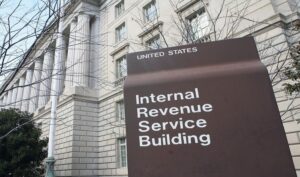
There are many rules and restrictions related to F-1 student employment in the United States. The government issues non-immigrant visas for specific, temporary reasons to visit the U.S. To remain within status and not lose your privileges, it's vital to understand the boundaries of your F-1 visa. Generally, United States Citizenship and Immigration Services (USCIS) only permits employment which is related to your education. But there are exceptions. Before seeking or accepting any employment in the U.S., understand the rules of F-1 student employment.
5 Paths for Students to Obtain Work Authorization
Generally, all employment is contingent on remaining within the terms and restrictions of your F-1 visa. F-1 students may not work off-campus during the first academic year, but may accept on-campus employment subject to certain conditions and restrictions. There are various programs available for F-1 students to seek off-campus employment after the first academic year. In all there are five paths for an F-1 student to obtain employment authorization within the United States:
F-1 Student Employment Guiderails
When evaluating employment options, many international students are surprised to learn about these 3 lesser known F-1 student employment facts:
Don't Put Your F-1 Status in Jeopardy
Work through your school’s International Student Office, and specifically get permission from your designated school official (DSO), before seeking or accepting employment. If your school’s DSO learns that you are working without permission, the DSO is obligated to report it through SEVIS. This could jeopardize your F-1 visa. That means that you will have to leave the United States immediately, and you may not be allowed to return. Don’t jeopardize your F-1 status. There are many opportunities to work and getting permission is a relatively simple process.
F-1 Student Employment Opportunities Available Immediately
Most F-1 students know that they may not work off-campus during the first academic year. However, there may be immediate opportunities for employment on campus. Although on-campus employment does not require USCIS approval, you should check with your school’s International Student Office to confirm that you have permission. Read more about on-campus F-1 student employment.
Additional Options for Those That Don’t Qualify for OPT, CPT and STEM
Many international students don’t realize there are other options available besides the standard Occupational Practical Training (OPT), Curricular Practical Training and STEM. Students that have suffered a “severe economic hardship” can qualify for employment authorization on that basis. International F-1 students may also be employed by a “qualifying international organization.” There is even an option for students that have run out of OPT – students can be authorized for 12 months of OPT for each successive level of degree achieved. Therefore a student can do 12 months of OPT after receiving an undergraduate degree, and then do 12 months of OPT after receiving a graduate degree. Read more about economic hardship.
On-Campus F-1 Student Employment
USCIS rules provide the greatest latitude and freedom for on-campus employment. What’s more, it does not require USCIS approval. Unfortunately, on-campus employment opportunities are limited and often do not relate to your area of study. Additionally, you cannot rely on an on-campus job to prove your financial ability to attend school. Many schools do require that you obtain permission from the International Student Office prior to accepting any on-campus employment and may not permit such employment in a student’s first semester or year.
On-Campus Employment Defined
The definition of on-campus employment includes:
- Work performed on the school’s premises directly for your school (including work affiliated with a grant or assistantship);
- Work performed for on-location commercial firms which provide services for students on campus, such as the school bookstore or cafeteria. (Employment with on-site commercial firms which do not provide direct student services, such as a construction company building a school building, is not deemed on-campus employment for the purposes of the rule.); and
- Work performed at an off-campus location which is educationally affiliated with the school. The educational affiliation must be associated with the school’s established curriculum or related to contractually funded research projects at the post-graduate level. The employment must also be an integral part of the student’s educational program.
On-Campus Employment Rules
For on-campus work, an F-1 student is subject to the following rules:
- You must maintain valid F-1 status;
- You can work up to 20 hours per week while school is in session;
- You can work full-time on campus during holidays and vacation periods if you intend to register for the next academic semester; and
- The employment may not displace (take a job away from) a U.S. resident.
Before seeking employment or accepting a job, check with your school’s International Student Office to confirm you have permission. When determining if an employment situation is within the on-campus guidelines, also seek support from the International Student Office. Your first priority should be keeping your visa in good status.
Optional Practical Training (OPT)
F-1 students in the U.S. may be permitted to work off-campus in optional practical training (OPT) status both during and after completion of their degree. Guidelines established by USCIS govern the implementation of OPT, and all OPT employment requires prior authorization from USCIS and from your school’s International Student Office.
How to Get an EAD Based on OPT
1. Communicate with Your School
Contact your school’s International Student Office to apply for OPT. They are there to assist you. You can apply for OPT after being enrolled for at least 9 months.
2. Complete Form I-765
Prepare Form I-765, Application for Employment Authorization. File the Form I-765 with your Form I-20, Certificate of Eligibility of Nonimmigrant (F-1) Student Status, and any other documents specified in the filing instructions. Your Form I-20 must be endorsed by a Designated School Official within the past 30 days. Commonly known as a work permit, an EAD can take over 90 days to acquire.
3. Begin Work
Once you have obtained your EAD (work permit), you may accept employment anywhere in the U.S.
General OPT Requirements
- Employment must be “directly related” to the student’s major
- Student must maintain lawful F-1 status
- Student must apply for OPT before completion of all work towards a degree
- Students who have engaged in 12 months or more of full-time Curricular Practical Training (CPT) are not eligible for OPT
- OPT is permitted for up to 12 months full-time in total – part-time OPT (while still in school) reduces available full-time OPT by half of the amount of part-time work (for instance, if you work part time for 6 months, you can work full-time for up to 9 months)
Students can be authorized for 12 months of OPT for each successive level of degree achieved. Therefore a student can do 12 months of OPT after receiving an undergraduate degree, go back to graduate school, and then do 12 months of OPT after receiving a graduate degree. Pre-completion OPT (students are still in school) and post-completion OPT (students have completed their degree) each have different rules.
OPT before completing a degree:
- Students must be enrolled in school full-time
- Students may only work 20 hours per week while school is in session
- Students may work full-time during summer and other breaks (as long as the student will return to school after the break)
- Student may work full-time after completion of all coursework, if a thesis or dissertation is still required and student is making normal progress towards the degree
OPT after completing a degree:
- After completion of your degree, OPT work must be full time (40 hours/week)
- All OPT must be completed within 14 months after completion of your degree
- Applications for post-completion OPT must be received by USCIS before the completion of the degree
17-Month Extension for STEM Students:
- If qualified, eligible for an additional 17 months of OPT (total of 29 months)
- Only available for STEM students in the subjects of actuarial science, computer science applications, engineering, engineering technologies, life sciences, mathematics, military technologies and physical sciences
- Must be employed by a company enrolled in the E-Verify program and provide that E-Verify information on Form I-765
Curricular Practical Training (CPT)
When practical training is an integral part of the established curriculum or academic program for F-1 students, Curricular Practical Training (CPT) is an off-campus employment option. CPT employment is defined as “alternative work/study, internship, cooperative education, or any other type of required internship or practicum that is offered by sponsoring employers through cooperative agreements with the school.” To be eligible for CPT employment:
- You must have been enrolled in school full-time for one year on valid F-1 status (except for graduate students where the program requires immediate CPT)
- The CPT employment must be an integral part of your degree program or requirement for a course for which you receive academic credit
- You must have received a job offer that qualifies before you submit your CPT authorization request
- Your job offer must be in your major or field of study
How to Get a Employment Authorization Based on CPT
1. Visit your school’s International Student Office to confirm your eligibility.
2. Locate an employment opportunity that fits your field of study.
3. Request CPT authorization from your school’s International Student Office and notify USCIS.
4. Begin working only for the specified employer that was approved for your CPT.
Once you receive CPT authorization, you can only work for the specific employer and for the specific dates authorized (unlike with OPT or severe economic hardship off-campus employment, where you can work anywhere in the US). Your CPT authorization will also specify whether you are approved for part-time (20 hours per week or less) or full-time (more than 20 hours per week) CPT employment. While in school, you can only be approved for part-time CPT.
Regardless of whether you are approved for full or part-time on CPT, there is no limit to how long you can work. However, if you work full-time on CPT for 12 months or more, you are not eligible for OPT. If you work part-time on CPT, or full-time on CPT for less than 12 months, you are still eligible for all of your allowable OPT. So make sure you watch the dates and hours closely – don’t jeopardize your OPT!
Severe Economic Hardship
Any F-1 student suffering “severe economic hardship” is eligible to work off-campus for up to 20 hours per week while school is in session, and full-time during breaks. Examples of severe economic hardship as defined by USCIS include: loss of financial aid or on-campus employment without fault on the part of the student; substantial fluctuations in the value of currency or exchange rate; inordinate increases in tuition and/or living costs; unexpected changes in the financial condition of the student’s source of support; or medical bills or other substantial and unexpected expenses. To be eligible under “severe economic hardship, you must:”
- Be in valid F-1 status for at least one academic year (9 months);
- Be in good academic standing;
- Provide evidence of economic hardship based on unforeseen circumstances beyond the student’s control;
- Show that on-campus employment is neither available nor sufficient; and
- Have made a good faith effort to locate employment on campus before applying
How to Get an EAD Based on Severe Economic Hardship
1. Communicate with Your School
Contact your school’s International Student Office to ensure you meet the eligibility requirements above and have their support. They are there to assist you.
2. Complete Form I-765
Prepare Form I-765, Application for Employment Authorization. File Form I-765 with your Form I-20, Certificate of Eligibility of Nonimmigrant (F-1) Student Status, and any other documents specified in the filing instructions. You should also include evidence of your hardship such as affidavits that detail the unforeseen economic circumstances that caused your request and evidence that you have tried to find off-campus employment with an employer who has filed a labor and wage attestation. Commonly known as a work permit, an EAD can take over 90 days to acquire.
3. Begin Work
Once you have obtained your EAD (work permit), you may accept employment anywhere in the U.S.
Employment Authorization through a Qualifying International Organization
International F-1 students may also be employed by a “qualifying international organization.” To be recognized as “qualifying,” the organization must be on the official State Department list. However, only students with a job offer and sponsorship from one of the listed organizations are eligible. Requirements to work for an international organization include:
- The student must have an internship/employment with a “qualifying international organization;”
- The employment must be within the scope of the organization’s sponsorship and within the student’s field of study;
- The student must have been in valid F-1 status for at least one full academic year; and
- The student must be in good academic standing.
How to Get an EAD Based on a Qualifying International Organization
1. Communicate with Your School
Contact your school’s International Student Office to ensure you meet the eligibility requirements above and have their support. They are there to assist you.
2. Complete Form I-765
Prepare Form I-765, Application for Employment Authorization. File Form I-765 with your Form I-20, Certificate of Eligibility of Nonimmigrant (F-1) Student Status, and any other documents specified in the filing instructions. Your Form I-20 must be endorsed by a Designated School Official within the past 30 days. Commonly known as a work permit, an EAD can take over 90 days to acquire.
3. Begin Work
Once you have obtained your EAD, you may work only for the employer approved in the EAD.
Unlike CPT and OPT, employment with an international organization does not have to be for-credit or count toward your degree program. Plus, regardless of how much or how long you work, this type of employment will not take away from your 12-month post-completion OPT.
Applying for F-1 Student Employment Authorization
After your school’s International Student Office has given you permission to seek employment, you also need to obtain an Employment Authorization Document (EAD) from USCIS. Also known as a work permit, the EAD is obtained by filing Form I-765, Application for Employment Authorization, with USCIS.
CitizenPath provides simple, affordable, step-by-step guidance through USCIS immigration applications. Individuals, attorneys and non-profits use the service on desktop or mobile device to prepare immigration forms accurately, avoiding costly delays. CitizenPath allows users to try the service for free and provides a 100% money-back guarantee that USCIS will approve the application or petition. We provide support for the Employment Authorization Package (Form I-765) and several other immigration services.
Want more immigration tips and how-to information for your family?
Sign up for CitizenPath’s FREE immigration newsletter and
SAVE 10%
on our immigration services






